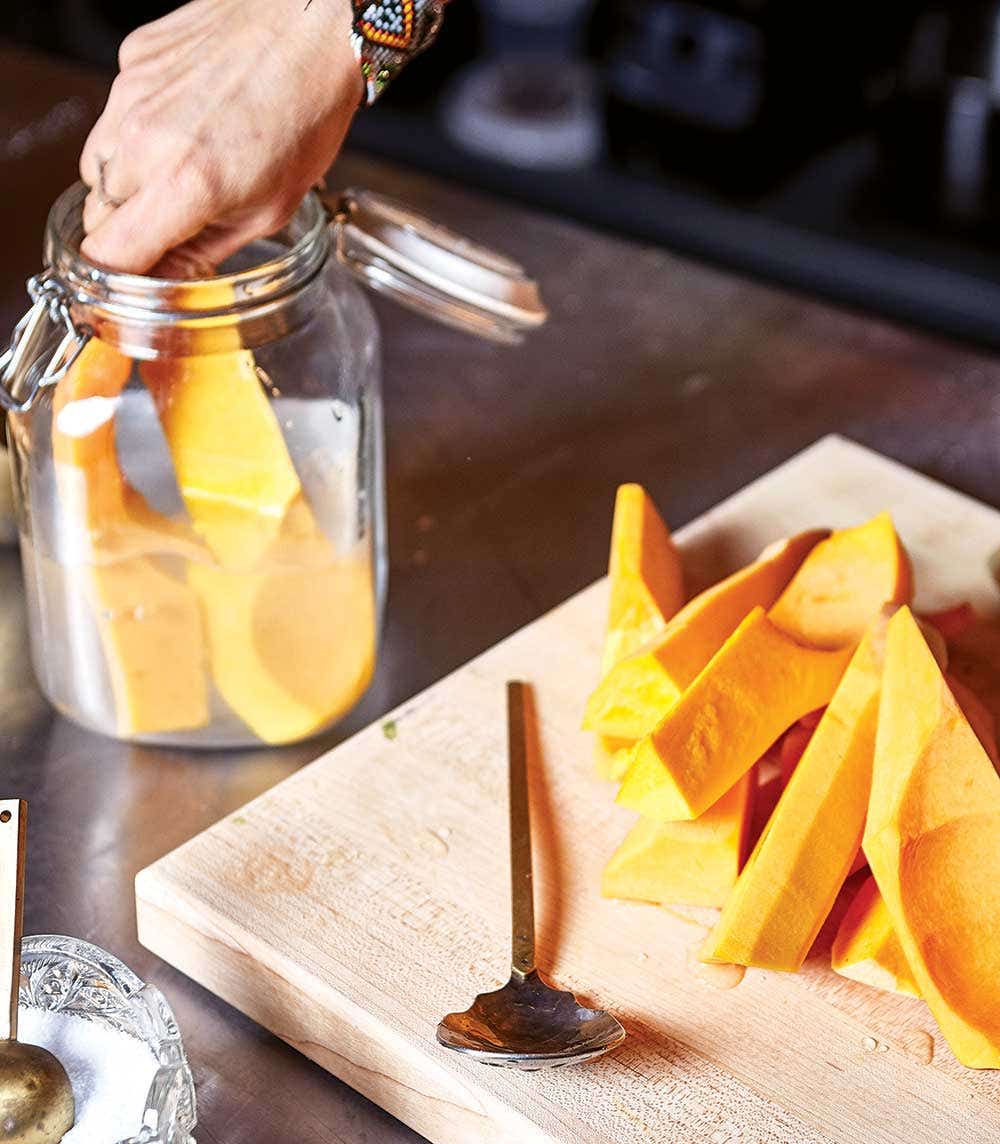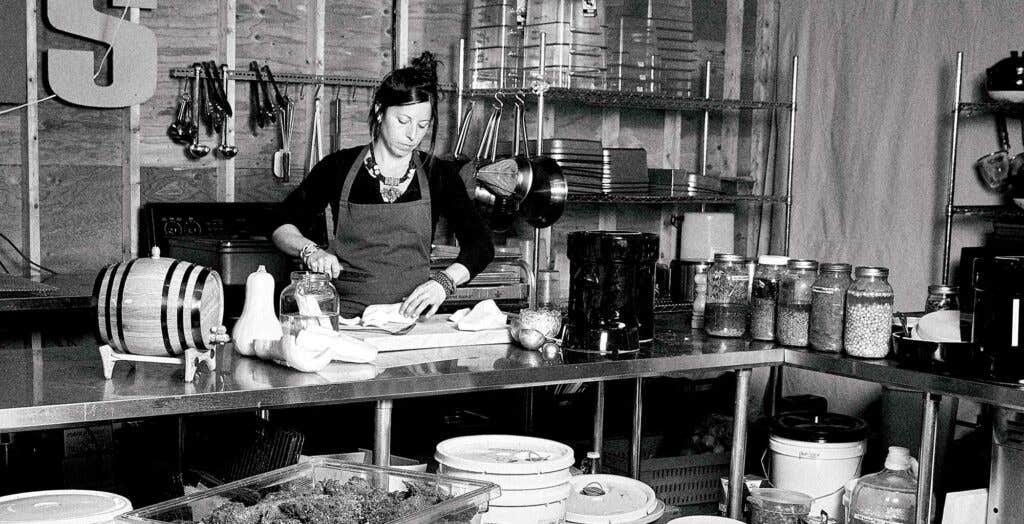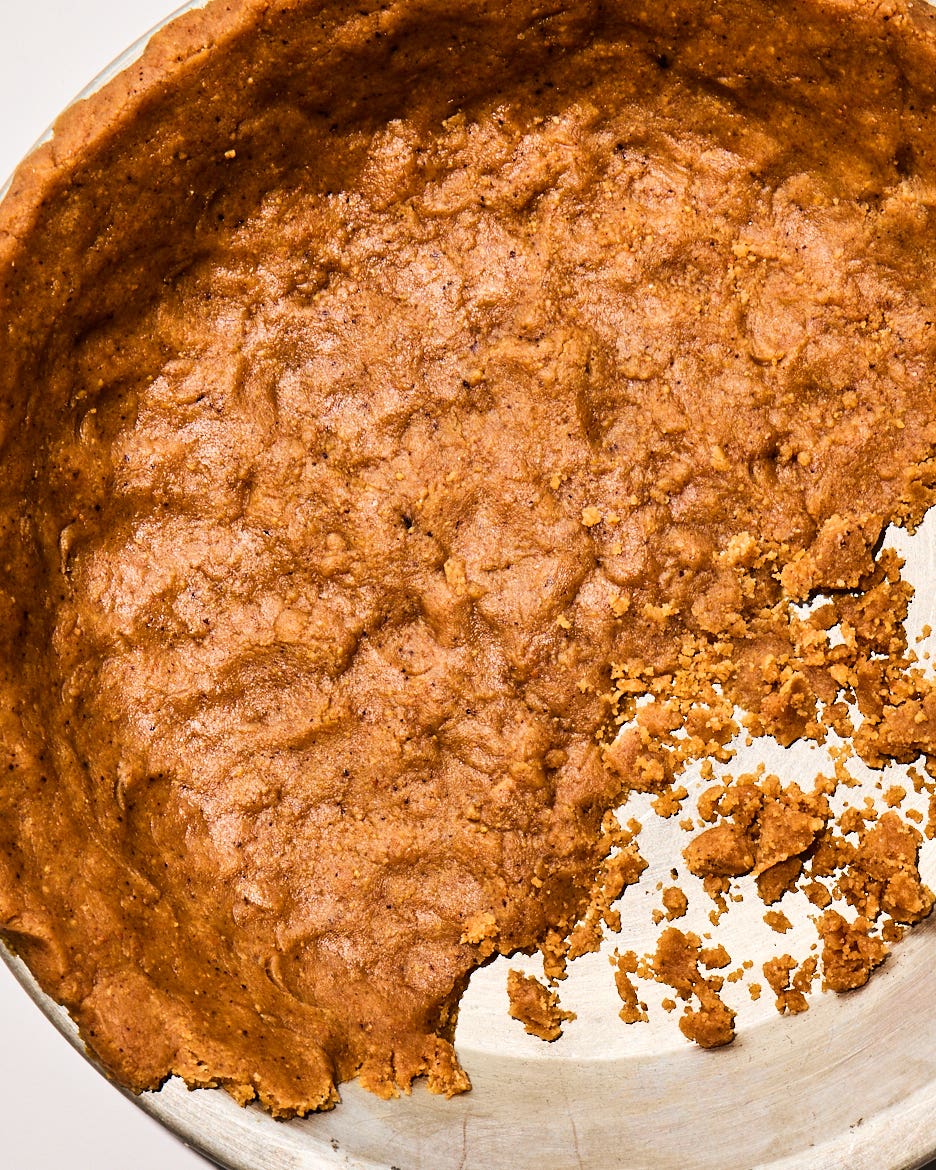Base Brine for Fermented Vegetables

This wet-brining technique promotes the development of lactobacillus, a bacteria that works to break down sugars into lactic acid, a natural preservative. Over time the vegetables will soften as if being gently cooked and take on a tangy, sour taste. It works best with hearty, durable vegetables (like the carrots and winter squash in the recipes that follow), and less so with fruits or more delicate vegetables. Every few days, check jars for mold and discard if needed.

What You Will Need
- Glass Jar
- Wooden Spoon
Ingredients
- Vegetables of your choice
- 1 tbsp. kosher salt per cup of water
Instructions
Step 1
Step 2
Step 3
Step 4
Step 5
- Cut large vegetables into halves, quarters, or slices; keep slender or small vegetables whole. Pack vegetables in a glass jar suited to their size.
- When the jar is full, add cold water, 1 cup at a time, to completely submerge (keep track of how much water you add).
- Using a long wooden spoon, stir in 1 tablespoon of kosher salt per cup of water used, until dissolved.
- Set a small plate or small resealable plastic bag filled with brine in the jar to keep the vegetables completely submerged.
- Tightly seal the jar, using a lid with an airlock if you have one. Set the jar in a clean, dark place between 60° and 68° until the vegetables taste sour, 2–3 weeks. If you have sealed the jar without an airlock, open the container every few days or so to release carbon dioxide buildup. Use immediately or transfer to the refrigerator for up to 1 year.
Keep Reading
Continue to Next Story










